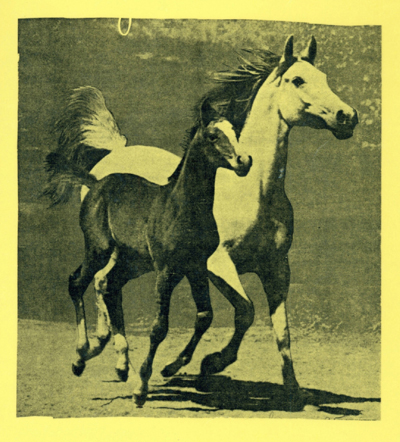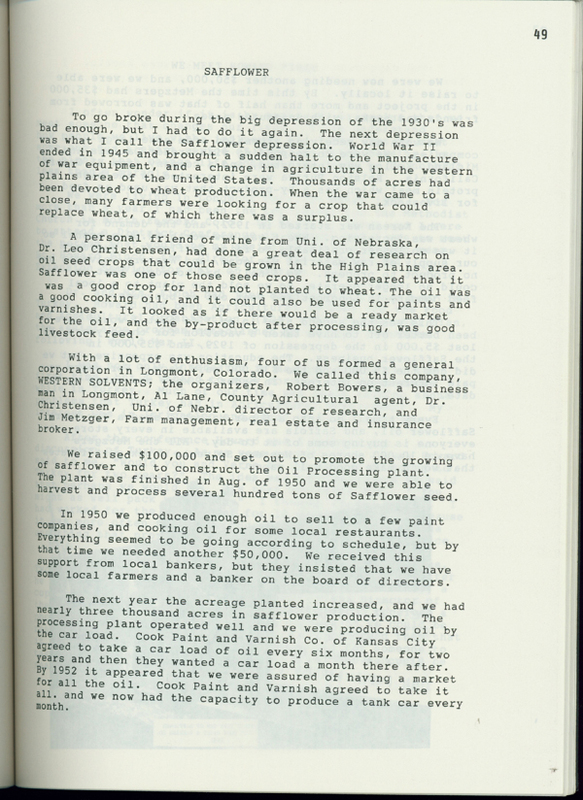101
Item
-
Title
-
101
-
Transcription
-
SAFFLOWER
To go broke during the big depression of the 1930's was bad enough, but I had to do it again. The next depression was what I call the Safflower depression. World War II ended in 1945 and brought a sudden halt to the manufacture of war equipment, and a change in agriculture in the western plains area of the United States. Thousands of acres had been devoted to wheat production. When the war came to a close, many farmers were looking for a crop that could replace wheat, of which there was a surplus.
A personal friend of mine from Uni. of Nebraska, Dr. Leo Christensen, had done a great deal of research on oil seed crops that could be grown in the High Plains area. Safflower was one of those seed crops. It appeared that it was a good crop for land not planted to wheat. The oil was a good cooking oil, and it could also be used for paints an varnishes. It looked as if there would be a ready market for the oil, and the by-product after processing, was good livestock feed.
With a lot of enthusiasm, four of us formed a general corporation in Longmont, Colorado. We called this company, WESTERN SOLVENTS; the organizers, Robert Bowers, a business man in Longmont, Al Lane, County Agricultural agent, Dr. Christensen, Uni. of Nebr. director of research, and Jim Metzger, Farm management, real estate and insurance broker.
We raised $100,000 and set out to promote the growing of safflower and to construct the Oil Processing plant. The plant was finished in Aug. of 1950 and we were able to harvest and process several hundred tons of Safflower seed.
In 1950 we produced enough oil to sell to a few paint companies, and cooking oil for some local restaurants. Everything seemed to be going according to schedule, but by that time we needed another $50,000. We received this support from local bankers, but they insisted that we have some local farmers and a banker on the board of directors.
The next year the acreage planted increased, and we had nearly three thousand acres in safflower production. The processing plant operated well and we were producing oil by the car load. Cook Paint and Varnish Co. of Kansas City agreed to take a car load of oil every six months, for two years and then they wanted a car load a month there after. By 1952 it appeared that we were assured of having a market for all the oil. Cook Paint and Varnish agreed to take it all. and we now had the capacity to produce a tank car every month.
-
Rights
-
To inquire about usage, please contact Archives & Special Collections, University of Nebraska-Lincoln Libraries. These images are for educational use only. Not all images are available for publication.
 Metzger Memories
Metzger Memories


